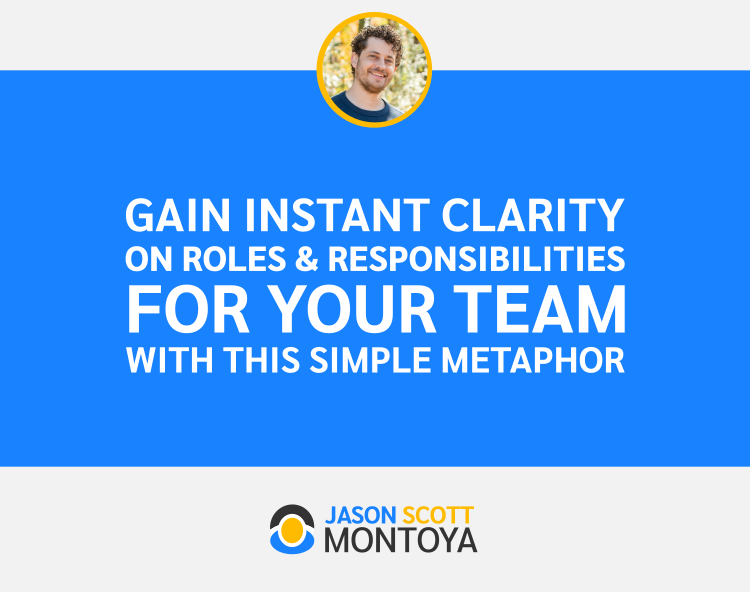
This Simple Metaphor Will Give You And Your Team Clarity On Roles And Responsibilities
Do you find yourself wondering who is responsible for different activities in your organization? Do you find yourself never receiving clarity on these roles? Do you find yourself including an absurd amount of people in email threads and meetings as a result of this lack of clarity on roles? Do you step on the toes of others as a result of trying to get stuff done in the midst of this chaos? Do you end up doing what someone else should be doing because of this tangled mess?
Should I keep going?
I've led and been a part of teams that are defined by this type of confusion. The exciting part of this problem is the solution is quite simple. We define the roles of the respective areas (Department, Campaigns, & Projects) and I've got a metaphor framework to help us easily find this clarity.

Roles & Responsibilities For Moving Projects Forward
Imagine we're driving an SUV from Atlanta, Georgia to Nashville, Tennessee. In this SUV, there are four people. Sarah is driving, Joey is sitting in the front passenger seat (Shotgun) helping Sam and Ellen who are passengers in the back seat. We've also got some backpacks, a cooler of drinks, and a few tools loaded up in the trunk of the vehicle. Now, while Sarah is driving the car, she doesn't actually own the vehicle. The owner of the SUV is Jack, but Jack is good friends with Sarah, who has proven herself to be a responsible driver.
As the owner of the vehicle, Jack is ultimately responsible for what happens to the people and the vehicle. He's also the one who decides who drives and rides in his vehicle.
As the driver of the vehicle, Sarah is responsible for getting the passengers and cargo to their destination. She moves them all from Atlanta to Nashville.
Joey, who is sitting shotgun in the car is responsible for assisting the driver, Sarah, however, she may need it. This also includes addressing any of the needs of the passengers in the back seat. Joey is primarily a support role to the driver.
Ideally, Sam and Ellen are providing some type of value for their participation in this mission, otherwise, why are they in the vehicle? Sam is a mechanic, so he's been brought along because the car had trouble in the past and they may need someone to assist, should it break down. Ellen is a talented musician and she's been brought along to entertain the group with her wonderful music and voice.
The group works together well and they have a wonderfully successful trip to Nashville.
How Do We Apply This Framework Into Our Work?
Think of the vehicle as the company, department, project, or action we're driving from one state or place to another. The cargo is any non-human resources and tools we need to properly get the job done.
Let me concisely recap the various ingredients from the team metaphor.
- Mission = Our Goal
- Owner = Decision maker
- Driver = Moves us forward
- Shotgun = Supports Driver
- Passengers = Support the mission
- Vehicle = The thing (project) we're using to accomplish our mission
- Cargo = Resources needed to complete the mission
With this metaphor in place, take the following questions to your department, campaign, or project and answer them.
- What is our mission (Strategy + Goals)?
- What is our vehicle (department, project, etc...)?
- Who owns (owner) this?
- Who (driver) is moving it forward?
- Who is supporting (shotgun) the driver?
- Who else (passengers) is supporting the mission?
- What resources (cargo) do we need to effectively move the vehicle forward?
Define each one. In many cases, one person may have multiple roles. In other cases, we may not have someone to fill the role. But, it's better to know this up front than not at all. Feel free to simplify the structure if you're operating with smaller teams of people.
By defining these elements, you'll have clarity on who to speak with, who needs to be accountable, and how to measure success when you're working on moving projects forward.
- Created on .
- Last updated on .
 This page is sponsored by
This page is sponsored by